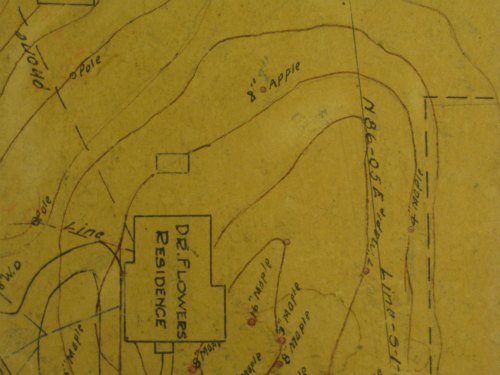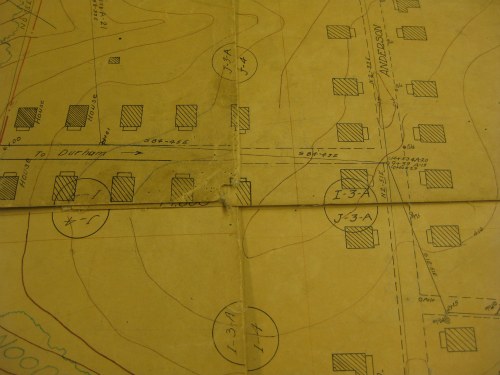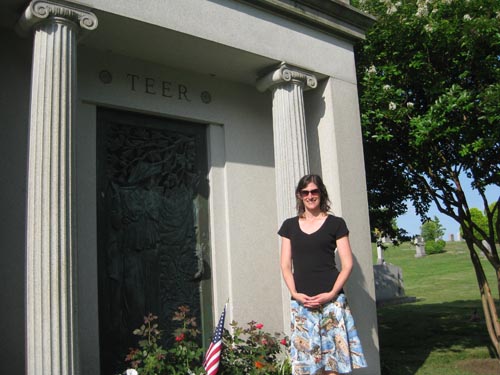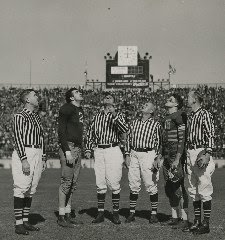This spring, the Flat Blue Devil has been visiting lots of fun places on campus. Here at the Duke University Archives, we have Flat Duke: that is, approximately 100 hand-drawn, 23 x 30 inch property plats detailing Duke University lands around 1925-1926. These plats helped the new university prepare for the reconstruction of East Campus and the construction of West Campus.
These five plats show the land along Anderson Street (part of which now belongs to the Sarah P. Duke Gardens):

These two plats show part of East Campus:
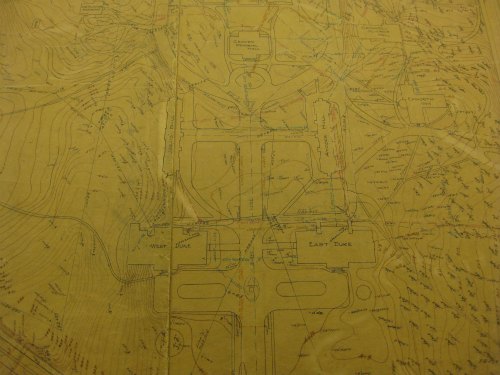
And when we say that these are detailed, we mean detailed. For instance, there was an apple tree near Vice President of the Business Division (and future Duke president) Robert L. Flowers‘ house (located on what is now East Campus).
How do you piece the plats together? Match up the circles!
As you can imagine, we’d need a pretty sizeable flat surface to lay all of these out. We wonder if we could borrow Cameron for a day….. Stop by the RBMSCL and pore over every little detail yourself!


